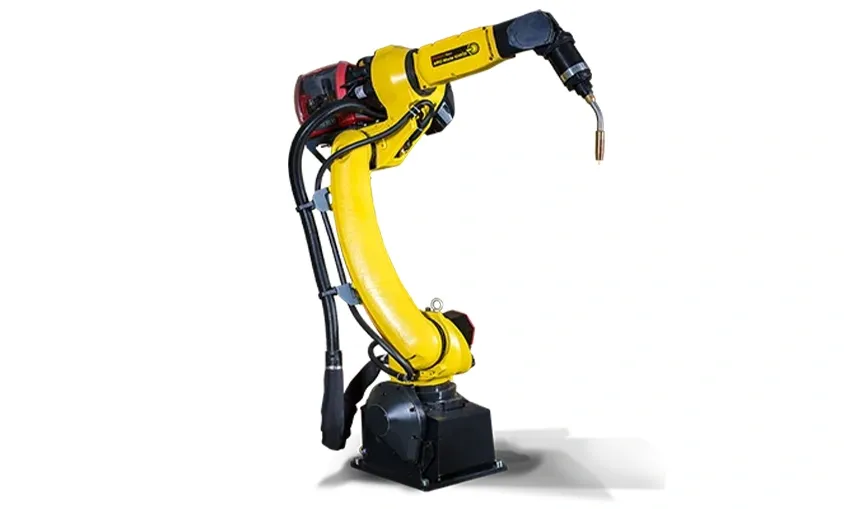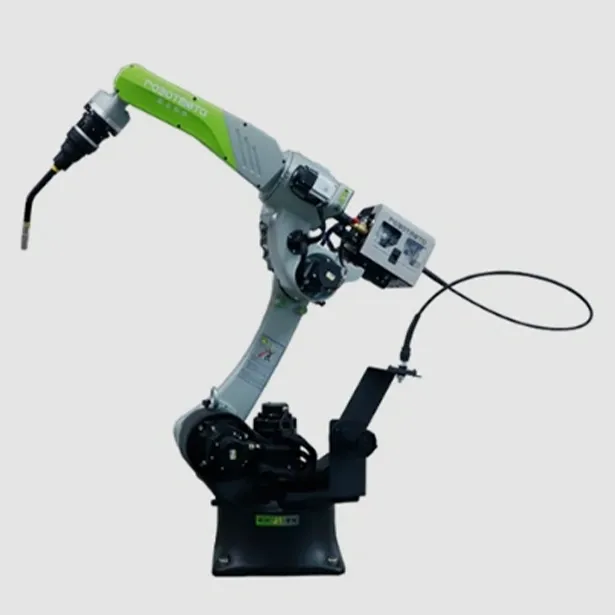Welding Robot
Welding robot is a technological system capable of performing welding in industrial production processes automatically and with high accuracy. It reduces the need for human labor, increases production speed, and minimizes the margin of error in repetitive tasks.
Welding robot, thanks to advanced software and sensor systems, can perform solid and high-quality welds on different types of materials. Integrated into the production line, these robots save time and offer great advantages in terms of occupational safety. By eliminating the risks of human fatigue or error in long-term operations, they enable consistent quality in production. As an indispensable part of industrial automation, welding robots provide businesses with competitiveness and optimize costs.
Welding Robot Prices
The pricing of a welding robot may vary depending on the brand, model, technology used, and the field of application. These systems, integrated into production lines, are especially preferred in the industrial field to improve quality and speed up processes.
The most important factors affecting the price include the capacity of the robot arm, working area, and durability. Robots with multi-axis movement capabilities are offered at higher costs since they allow welding from different angles.

In advanced welding robots, high precision is one of the main advantages. Thanks to their programmable control feature, these systems can be adapted to different projects and provide flexibility in production.
When pricing, the level of the automation system technology and the software owned by the robot are also decisive. One of the main reasons for preferring robotic welding systems is the increase in efficiency they bring to businesses and the time savings in the production line.
Other criteria that affect the prices of automatic welding machines are as follows:
- Speed and labor savings provided in the production line
- Sensor technology that reduces the margin of error during operation
- Ability to adapt to different types of materials
- Long-term maintenance costs and spare part availability
Welding robot prices should not only be evaluated in terms of initial cost. Considering the quality, production standard, and speed it provides, they offer businesses significant advantages in the long term.
Welding Robot Features
The features of a welding robot are designed to ensure maximum quality, speed, and safety in production lines. Depending on the technology used, these robots can be applied in different fields and are especially preferred in the automotive, shipbuilding, white goods, and heavy industry sectors.
In modern production processes, systems integrated with a laser welding machine provide the advantage of high penetration and minimum deformation in thin materials. In addition, models compatible with gas metal arc welding offer high durability in joining thick parts.
Another important feature of welding robots is their ability to combine different welding techniques within the same system. For example, the Mig Mag method offers both speed and quality in mass production, creating flexibility in the production line. The robotic arm on these systems, with its multi-directional movement capability, allows uninterrupted welding even in narrow areas.
The prominent features of welding robots can be summarized as follows:
- Fiber laser compatibility ensuring maximum quality in fine tasks
- Industrial robot structure resistant to long-term and challenging operations in production areas
- Robotic welding technology minimizing error margin in repetitive tasks
- Design and software options compatible with various welding methods
- Sensor-supported working systems that enhance occupational safety
In summary, the features of a welding robot stand out not only with the technology used but also with the speed, quality, and cost advantages they offer businesses. Becoming one of the most critical components of industrial automation, these systems add value to the production line and increase the competitiveness of enterprises.
Frequently Asked Questions
Welding robots perform automated welding in industrial production processes, improving occupational safety and production speed. They eliminate human error in repetitive tasks and ensure consistent quality in mass production.
Welding machines are categorized according to their method of use. Arc welding, TIG, MIG/MAG, plasma, and laser-based systems are among these groups. Each welding technique offers different advantages depending on the type of material and production requirements.
Inverter welding machines stand out with their lightweight and portable design. Thanks to digital control technology, they create a more stable arc. Traditional machines, on the other hand, are heavier and may be limited in terms of energy efficiency.
The amperage value depends on the thickness of the material to be used. Low amperage is sufficient for thin sheets, while high amperage should be preferred for thick steel. In general, the range of 160-200 amps is considered ideal for most professional work.
For more information about welding robots and industrial welding automation solutions, you can contact Eko Kaynak.

